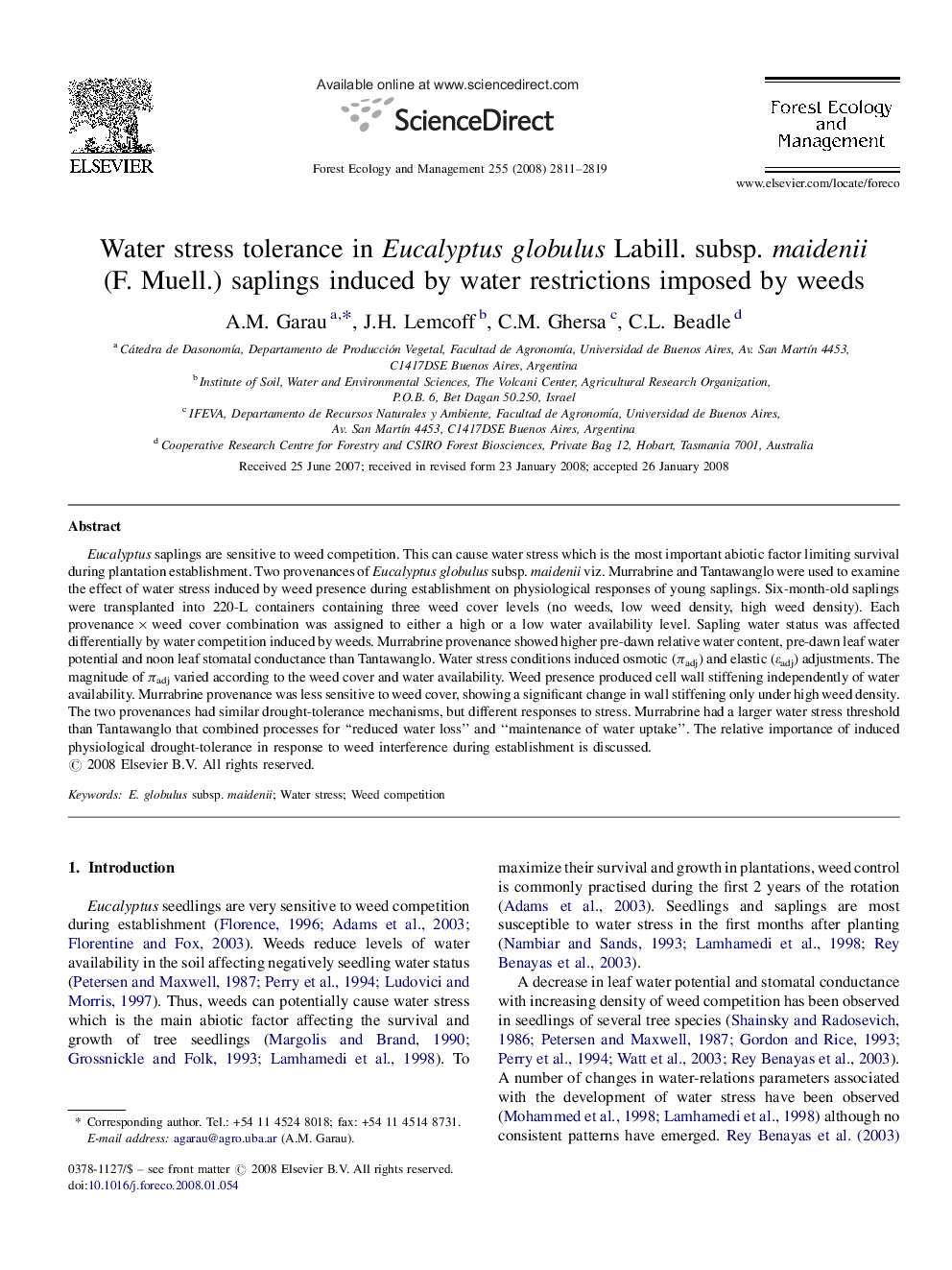| Article ID | Journal | Published Year | Pages | File Type |
|---|---|---|---|---|
| 89417 | Forest Ecology and Management | 2008 | 9 Pages |
Eucalyptus saplings are sensitive to weed competition. This can cause water stress which is the most important abiotic factor limiting survival during plantation establishment. Two provenances of Eucalyptus globulus subsp. maidenii viz. Murrabrine and Tantawanglo were used to examine the effect of water stress induced by weed presence during establishment on physiological responses of young saplings. Six-month-old saplings were transplanted into 220-L containers containing three weed cover levels (no weeds, low weed density, high weed density). Each provenance × weed cover combination was assigned to either a high or a low water availability level. Sapling water status was affected differentially by water competition induced by weeds. Murrabrine provenance showed higher pre-dawn relative water content, pre-dawn leaf water potential and noon leaf stomatal conductance than Tantawanglo. Water stress conditions induced osmotic (πadj) and elastic (ɛadj) adjustments. The magnitude of πadj varied according to the weed cover and water availability. Weed presence produced cell wall stiffening independently of water availability. Murrabrine provenance was less sensitive to weed cover, showing a significant change in wall stiffening only under high weed density. The two provenances had similar drought-tolerance mechanisms, but different responses to stress. Murrabrine had a larger water stress threshold than Tantawanglo that combined processes for “reduced water loss” and “maintenance of water uptake”. The relative importance of induced physiological drought-tolerance in response to weed interference during establishment is discussed.
